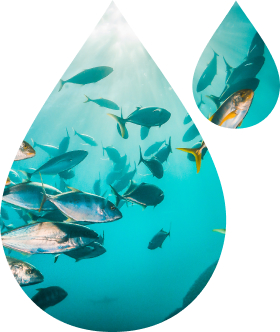Energy transition in the EU fishing fleet
In terms of the energy transition and emission reduction targets, the fishing sector is covered by the Effort Sharing Regulation. The regulation establishes for each Member State a national target for the reduction of GHG emissions by 2030 in a group of sectors that includes fisheries, along with domestic transport (excluding aviation), buildings, agriculture, small industry and waste. In total, the emissions covered by the Effort Sharing Regulation account for almost 60% of total domestic EU emissions. The regulation was amended in 2023, to include new national targets that should collectively contribute to a 40% reduction in emissions compared with 2005 levels in the effort sharing sectors.
The EU fishing fleet consumed 1.60 billion litres of fuel to land 3.5 million tonnes of fish valued at 6.6 billion at the first sale in 2022. This fuel consumption led to the emission of roughly 4.2 million tonnes of CO2. Between 2009 and 2022, fuel consumption and therefore CO2 emissions decreased by 31%, while fish landings in weight decreased by 17%, despite increasing by 17% in value (Figure 42).
Figure 42 Change in landings weight, turnover and emissions, in total and per vessel, 2009–2022 (100 = 2009)
Source: Authors’ own calculations based on Scientific, Technical and Economic Committee for Fisheries (STECF), The 2024 annual economic report on the EU fishing fleet, Publications Office of the European Union, Luxembourg, 2024.
The EU fleet has become more efficient over the years, as emissions have decreased faster than the weight of landings, and the value of landings has even increased.
Fuel use and efficiency indicators for the fisheries sector can be defined as follows:
- Fuel use intensity or fuel use per kg of fish is defined as the ratio between the quantity of fuel consumed and the quantity of fish landed, expressed in litres per kg;
- Fuel efficiency is defined as the ratio between fuel costs and income from landings, expressed as a percentage;
- Fuel use per income generated is defined as the ratio between the quantity of fuel consumed and the value of landings, expressed in litres per euro.
The fuel efficiency indicator that compares fuel costs with the income from landings has increased in recent years because of rising fuel prices. Fuel price increases lead to higher fuel costs, worsening economic efficiency. The lower the percentage, the more fuel efficient the vessel (i.e., less income is used to cover fuel costs). Fuel costs as a proportion of income were estimated at 22% in 2022, the highest historical value since 2013.
On the other hand, Fuel use per kg of fish shows how much fuel is needed to land a kg of fish. This indicator confirms a decreasing trend, so 17% less fuel was needed to land a kg of fish in 2022 (0.46 litres/kg), than in 2009 (0.55 litres/kg).
Figure 43 Change in fuel intensity (l/kg), fuel efficiency (%), fuel use per income generated (l/€) and fuel price, 2009–2022
Source: Authors’ own elaboration based on STECF, The 2024 annual economic report on the EU fishing fleet, Publications Office of the European Union, Luxembourg, 2024.
On average, seafood has a lower carbon footprint than animal production on land; however, emissions vary significantly by fishing method and species targeted. Depending on the fishery, fuel use intensity can vary from less than 1 l/kg to up to 10 l/kg. According to studies at the global level, fish species associated with the highest fuel use intensity are high-value crustaceans captured with traps and lift nets (2-5 l/kg). Flatfish fishing and the use of bottom trawls are also related to higher fuel use intensities (1-3 l/kg), while cheaper small pelagic fishing and the use of surrounding nets and pelagic trawling are related to low fuel intensity (below 0.2 l/kg). Fishery management can also affect emissions, since overfished stocks require more fuel than sustainably managed resources to catch the same amount of fish.

